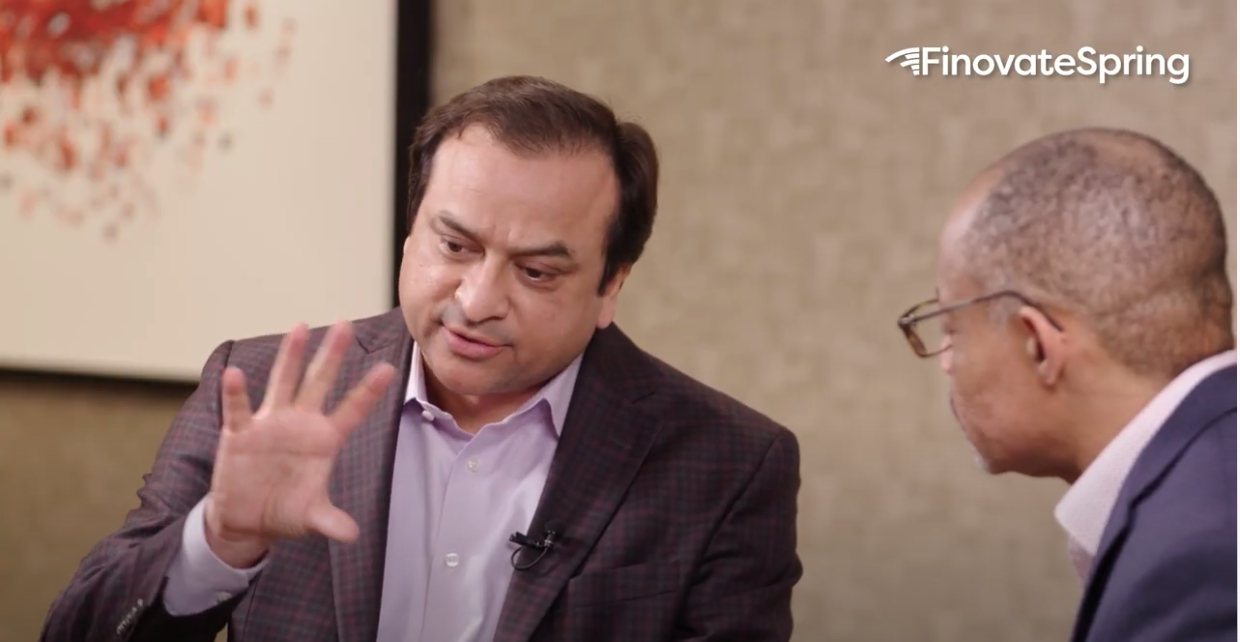
Finovate VP and host of the Finovate Podcast Greg Palmer (@GregPalmer47) recently sat down with James Robert Lay of the Banking on Digital Growth podcast. The two talked about a wide range of topics, from Finovate’s return to live, in-person fintech conferences to the challenges of building a truly people-focused fintech business in a post-COVID world.

Palmer: “What I didn’t necessarily expect was the way that the financial industry was going to respond to the pandemic by really diving in to technology and seeing a lot of these kinds of older holdouts all of a sudden saying, “wait a minute, we really have to do things differently.” This impetus, this drive to change, I think is the thing that surprised me the most.”
Lay and Palmer also talked about what it takes for a fintech company to manage the balance between creating novel, ground-breaking technology on the one hand, while remaining accessible, and easy to use for consumers on the other.
Palmer: “(Financial technology) tends to draw people in who are comfortable with numbers, who are comfortable in front of a computer screen, who want technology to do things that it hasn’t been able to do before, which is obviously really impressive and these are intelligent people. But what sometimes gets missed is the idea that, at the end of the day, you’re not building technology for yourself.”
To whet your appetite for the full, 40-minute conversation, here are a handful of excerpts from the discussion.
On Finovate’s return to live, in-person events.
Palmer: “The number of people, the number of interesting companies that came across our radar over 2022 was really exciting. And I think, for me, obviously getting people there is great, getting the right companies on stage is great, but the energy of the room was what was really positive for me. Hearing those conversations, watching people connect and engage with each other organically and discovering where you have common interests or places where you can help each other out, that’s really why we do what we do at Finovate.”
On the challenge of putting people first in fintech and financial services
Palmer: “Well, I think you hit the nail on the head when it comes to people. I think people forget that financial technology is ultimately about serving people … at the end of the day, you’re not building technology for yourself. You’re building technology for other people to use. And if I look back and say, what is one of fintech’s biggest failings over my time (in) fintech, I think it’s really been around people.”
On leveraging data to become a more people-focused business
Palmer: “The first step is understanding the data that you have, looking at this and really making sure that you have a good idea of how people are engaging with your technology. The other one, which is almost so simple that I can’t believe I need to say it, (is) you need to hire up. You need to hire people who have this as a skill.”
Listen to the complete interview, which includes examples of some of the fintech innovators that Greg Palmer has worked with in recent years – from Dreams to MX – who truly “get it” when it comes to creating innovative, people-first, fintech innovations. And be sure to catch up with the latest episodes of the Finovate podcast, including an interview with Ukrainian fintech founder Igor Tomych of Fintech Garden.














